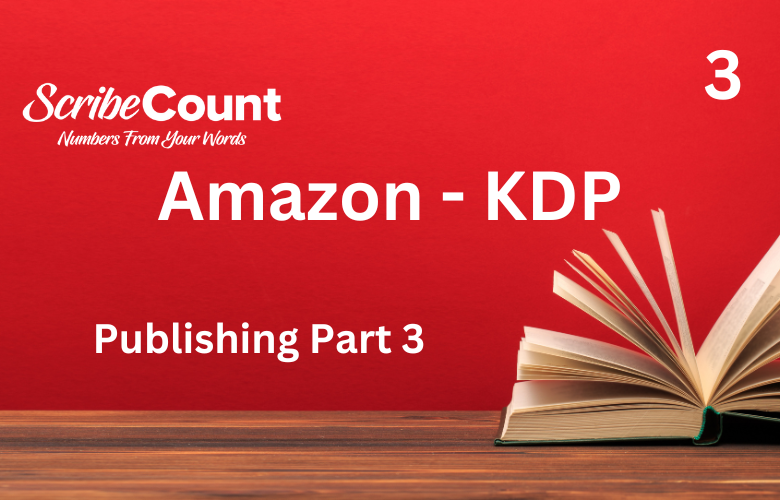Kindle Direct Publishing (KDP) has revolutionized the publishing world, providing indie authors with the tools to publish and distribute their books worldwide. With its easy-to-use platform, authors can publish eBooks and paperbacks without the barriers of entry found in traditional publishing. This article explores the history, services, costs, benefits, and potential downsides of using KDP, along with strategies for indie authors to maximize their success.
A Brief History of Kindle Direct Publishing
Kindle Direct Publishing was launched by Amazon in 2007 alongside the first-generation Kindle e-reader. Jeff Bezos, the founder of Amazon, envisioned a platform that would make publishing accessible to all authors, eliminating the need for intermediaries such as literary agents and publishing houses. The service evolved from Amazon’s earlier publishing initiative, CreateSpace, which merged with KDP in 2018, streamlining print-on-demand services for independent authors.
Headquartered in Seattle, Washington, KDP operates globally, serving authors from all over the world. With Amazon’s expansive distribution network, books published through KDP can reach millions of readers across numerous countries.
Main Services Offered by Kindle Direct Publishing
KDP provides a range of services designed to help authors publish, market, and distribute their books. These include:
1. eBook Publishing
Authors can publish digital books in Kindle format, making them available on Amazon’s Kindle Store. Books are formatted in Kindle’s proprietary format and can be read on Kindle devices, as well as through the Kindle app on smartphones, tablets, and computers.
2. Paperback Publishing
With print-on-demand (POD) services, authors can publish paperback versions of their books without upfront printing costs. KDP handles printing and shipping when a customer orders a copy, eliminating the need for inventory management.
3. Kindle Unlimited (KU) and KDP Select
KDP Select is an optional program that grants Amazon exclusive distribution rights in exchange for additional promotional opportunities. Enrolled books are available through Kindle Unlimited (KU), a subscription service that allows readers to borrow books. Authors earn royalties based on page reads.
4. Expanded Distribution
While KDP primarily sells books on Amazon, it offers an expanded distribution option for paperbacks, allowing books to be sold through other retailers and bookstores.
5. Author Dashboard and Sales Analytics
KDP provides authors with real-time sales data, reports, and analytics to help them track their book’s performance.
6. Marketing and Promotional Tools
KDP offers tools like Kindle Countdown Deals and Free Book Promotions for authors enrolled in KDP Select. These tools allow authors to temporarily discount their books or offer them for free to attract more readers.
Where KDP Services and Products Are Offered
KDP operates in multiple marketplaces across the world, including the United States, Canada, the United Kingdom, Australia, Germany, France, Italy, Spain, India, Japan, Brazil, and Mexico. Readers in these regions can purchase eBooks and paperbacks through Amazon’s localized websites.
How Indie Authors Can Benefit from Using KDP
KDP provides several key advantages for indie authors:
Ease of Access: No traditional publishing gatekeepers, allowing authors to self-publish quickly.
Global Reach: Books can be sold worldwide through Amazon’s platform.
Higher Royalties: Authors earn up to 70% on eBooks priced between $2.99 and $9.99.
Print-on-Demand: No upfront costs for printing and inventory management.
Control Over Rights and Pricing: Authors retain full rights to their work and set their own prices.
Marketing Opportunities: Built-in promotional tools help authors reach new audiences.
Costs Associated with Using KDP
While publishing on KDP is free, authors should consider the following costs:
Editing and Proofreading: Professional editing services can range from a few hundred to several thousand dollars.
Cover Design: A high-quality cover can cost anywhere from $50 to $500 or more.
Formatting: Authors may need to hire a professional formatter, which can cost between $50 and $300.
Marketing and Advertising: Amazon Ads and other promotional strategies often require a budget.
ISBNs: KDP provides free ISBNs for paperbacks, but authors who wish to use their own may purchase one through Bowker (USA) or other providers.
Pros and Cons of Using KDP
Pros
Free to Publish: No upfront costs for using the platform.
Fast Publishing Process: eBooks can be published in as little as 24 hours.
Direct Royalties: Payments are made monthly.
Flexible Pricing: Authors control their book’s pricing.
Multiple Formats: eBooks and paperbacks can be published easily.
Cons
KDP Select Exclusivity: Enrollment in KDP Select restricts eBook distribution to Amazon.
Limited Control Over Book Placement: Amazon’s algorithm dictates visibility.
Royalties Capped at 35% for Higher-Priced eBooks: Books priced outside the $2.99–$9.99 range receive only 35% royalties.
Competition: The platform is highly competitive, making it difficult to stand out.
How Indie Authors Can Leverage KDP for Maximum Success
To succeed with KDP, indie authors should consider the following strategies:
Invest in Professional Editing and Design: A polished book with an eye-catching cover increases sales potential.
Optimize Keywords and Categories: Using the right keywords and selecting the best categories can improve discoverability.
Utilize Amazon Ads: Running pay-per-click (PPC) campaigns can boost visibility.
Build an Author Platform: Having a website, email list, and social media presence can drive sales.
Leverage KDP Select Strategically: If exclusivity aligns with your business goals, KDP Select can offer additional exposure.
Encourage Reviews: Positive reviews improve credibility and ranking in search results.
Price Strategically: Experiment with different pricing models to maximize revenue.
Publish Multiple Books: The more books you have, the more visibility and earning potential you gain.
Conclusion
Kindle Direct Publishing is a game-changer for indie authors, offering a straightforward and cost-effective way to publish and distribute books worldwide. While there are challenges, the benefits far outweigh the drawbacks for most self-publishers. By leveraging the tools and strategies outlined in this guide, indie authors can maximize their success on KDP and build a thriving publishing career.

